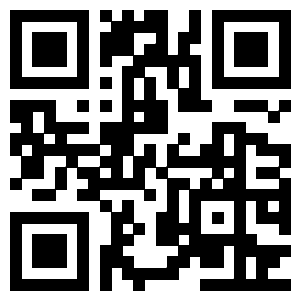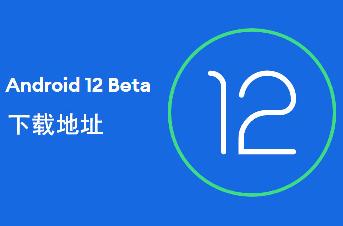Android下的POS打印机调用的简单实现教程
本文基于GP58系列,它可以兼容ESC/POS指令集,对EPSON的打印机通用.
Android下的设备调试,如果设备提供了驱动,按照厂家的驱动调试即可;设备未提供驱动,只能按照通用的方法进行调试。这里采用的是调用USB接口来控制打印机输出。
1.首先获取USB管理器
public UsbAdmin(Context context) {
mUsbManager = (UsbManager) context.getSystemService(Context.USB_SERVICE);
mPermissionIntent = PendingIntent.getBroadcast(context, 0, new Intent(ACTION_USB_PERMISSION), 0);
IntentFilter filter = new IntentFilter(ACTION_USB_PERMISSION);
context.registerReceiver(mUsbReceiver, filter);
}
使用一个延迟意图来接收usb接入时的广播,当广播接收到时,说明有新的设备接入。
添加一个boardcast action
复制代码 代码如下:
private static final String ACTION_USB_PERMISSION = "com.android.example.USB_PERMISSION";
private final BroadcastReceiver mUsbReceiver = new BroadcastReceiver() {
public void onReceive(Context context, Intent intent) {
String action = intent.getAction();
if (ACTION_USB_PERMISSION.equals(action)) {
synchronized (this) {
UsbDevice device = (UsbDevice) intent.getParcelableExtra(UsbManager.EXTRA_DEVICE);
if (intent.getBooleanExtra(UsbManager.EXTRA_PERMISSION_GRANTED, false)) {
if (device != null) {
setDevice(device);
} else {
Closeusb();
// mDevice = device;
}
} else {
Log.d(TAG, "permission denied for device " + device);
}
}
}
}
};
取到usb设备的引用,android系统会询问你是否允许设备访问,默认为false;当允许了访问之后,会判断USB的引用是否为null,如果不为空则会调用setDevice来创建一个Connection,否则会关闭本次连接。
在setDevice中,我们可以获取设备的功能集(UsbInterface),也可以获取通信通道(UsbEndpoint),同时也创建了host与device的连接用来传输数据。
private void setDevice(UsbDevice device) {
if (device != null) {
UsbInterface intf = null;
UsbEndpoint ep = null;
int InterfaceCount = device.getInterfaceCount();
int j;
mDevice = device;
for (j = 0; j < InterfaceCount; j++) {
int i;
intf = device.getInterface(j);
Log.i(TAG, "接口是:" + j + "类是:" + intf.getInterfaceClass());
if (intf.getInterfaceClass() == 7) {
int UsbEndpointCount = intf.getEndpointCount();
for (i = 0; i < UsbEndpointCount; i++) {
ep = intf.getEndpoint(i);
Log.i(TAG, "端点是:" + i + "方向是:" + ep.getDirection() + "类型是:" + ep.getType());
if (ep.getDirection() == 0 && ep.getType() == UsbConstants.USB_ENDPOINT_XFER_BULK) {
Log.i(TAG, "接口是:" + j + "端点是:" + i);
break;
}
}
if (i != UsbEndpointCount) {
break;
}
}
}
if (j == InterfaceCount) {
Log.i(TAG, "没有打印机接口");
return;
}
mEndpointIntr = ep;
UsbDeviceConnection connection = mUsbManager.openDevice(device);
if (connection != null && connection.claimInterface(intf, true)) {
Log.i(TAG, "打开成功! ");
mConnection = connection;
} else {
Log.i(TAG, "打开失败! ");
mConnection = null;
}
}
}
2.在相关的类中新建一个UsbAdmin,调用openUsb,这里首先是走了上面的setDevice()方法,获取到了设备的引用,当连接通道建立时列出所有USB设备,当设备的引用不存在时同样列出所有的USB设备,并且都请求获取USB权限。
public void openUsb() {
if (mDevice != null) {
setDevice(mDevice);
if (mConnection == null) {
HashMap deviceList = mUsbManager.getDeviceList();
Iterator deviceIterator = deviceList.values().iterator();
while (deviceIterator.hasNext()) {
UsbDevice device = deviceIterator.next();
mUsbManager.requestPermission(device, mPermissionIntent);
}
}
} else {
HashMap deviceList = mUsbManager.getDeviceList();
Iterator deviceIterator = deviceList.values().iterator();
while (deviceIterator.hasNext()) {
UsbDevice device = deviceIterator.next();
mUsbManager.requestPermission(device, mPermissionIntent);
}
}
}
3.当上面两部都走完了之后,我们就可以发送指令来控制已经建立连接的打印机了,这里我们使用的是标准的ESC/POS指令集,为硬件默认,贴出代码,这里的指令集采用的是十进制表示形式,也可以替换成十六进制。
public class printerCmdUtils {
/**
* 这些数据源自爱普生指令集,为POS机硬件默认
*/
public static final byte ESC = 27;//换码
public static final byte FS = 28;//文本分隔符
public static final byte GS = 29;//组分隔符
public static final byte DLE = 16;//数据连接换码
public static final byte EOT = 4;//传输结束
public static final byte ENQ = 5;//询问字符
public static final byte SP = 32;//空格
public static final byte HT = 9;//横向列表
public static final byte LF = 10;//打印并换行(水平定位)
public static final byte CR = 13;//归位键
public static final byte FF = 12;//走纸控制(打印并回到标准模式(在页模式下) )
public static final byte CAN = 24;//作废(页模式下取消打印数据 )
//------------------------打印机初始化-----------------------------
/**
* 打印机初始化
* @return
*/
public static byte[] init_printer()
{
byte[] result = new byte[2];
result[0] = ESC;
result[1] = 64;
return result;
}
//------------------------换行-----------------------------
/**
* 换行
* @param lineNum要换几行
* @return
*/
public static byte[] nextLine(int lineNum)
{
byte[] result = new byte[lineNum];
for(int i=0;i
{
result[i] = LF;
}
return result;
}
//------------------------下划线-----------------------------
/**
* 绘制下划线(1点宽)
* @return
*/
public static byte[] underlineWithOneDotWidthOn()
{
byte[] result = new byte[3];
result[0] = ESC;
result[1] = 45;
result[2] = 1;
return result;
}
/**
* 绘制下划线(2点宽)
* @return
*/
public static byte[] underlineWithTwoDotWidthOn()
{
byte[] result = new byte[3];
result[0] = ESC;
result[1] = 45;
result[2] = 2;
return result;
}
/**
* 取消绘制下划线
* @return
*/
public static byte[] underlineOff()
{
byte[] result = new byte[3];
result[0] = ESC;
result[1] = 45;
result[2] = 0;
return result;
}
//------------------------加粗-----------------------------
/**
* 选择加粗模式
* @return
*/
public static byte[] boldOn()
{
byte[] result = new byte[3];
result[0] = ESC;
result[1] = 69;
result[2] = 0xF;
return result;
}
/**
* 取消加粗模式
* @return
*/
public static byte[] boldOff()
{
byte[] result = new byte[3];
result[0] = ESC;
result[1] = 69;
result[2] = 0;
return result;
}
//------------------------对齐-----------------------------
/**
* 左对齐
* @return
*/
public static byte[] alignLeft()
{
byte[] result = new byte[3];
result[0] = ESC;
result[1] = 97;
result[2] = 0;
return result;
}
/**
* 居中对齐
* @return
*/
public static byte[] alignCenter()
{
byte[] result = new byte[3];
result[0] = ESC;
result[1] = 97;
result[2] = 1;
return result;
}
/**
* 右对齐
* @return
*/
public static byte[] alignRight()
{
byte[] result = new byte[3];
result[0] = ESC;
result[1] = 97;
result[2] = 2;
return result;
}
/**
* 水平方向向右移动col列
* @param col
* @return
*/
public static byte[] set_HT_position( byte col )
{
byte[] result = new byte[4];
result[0] = ESC;
result[1] = 68;
result[2] = col;
result[3] = 0;
return result;
}
//------------------------字体变大-----------------------------
/**
* 字体变大为标准的n倍
* @param num
* @return
*/
public static byte[] fontSizeSetBig(int num)
{
byte realSize = 0;
switch (num)
{
case 1:
realSize = 0;break;
case 2:
realSize = 17;break;
case 3:
realSize = 34;break;
case 4:
realSize = 51;break;
case 5:
realSize = 68;break;
case 6:
realSize = 85;break;
case 7:
realSize = 102;break;
case 8:
realSize = 119;break;
}
byte[] result = new byte[3];
result[0] = 29;
result[1] = 33;
result[2] = realSize;
return result;
}
//------------------------字体变小-----------------------------
/**
* 字体取消倍宽倍高
* @param num
* @return
*/
public static byte[] fontSizeSetSmall(int num)
{
byte[] result = new byte[3];
result[0] = ESC;
result[1] = 33;
return result;
}
//------------------------切纸-----------------------------
/**
* 进纸并全部切割
* @return
*/
public static byte[] feedPaperCutAll()
{
byte[] result = new byte[4];
result[0] = GS;
result[1] = 86;
result[2] = 65;
result[3] = 0;
return result;
}
/**
* 进纸并切割(左边留一点不切)
* @return
*/
public static byte[] feedPaperCutPartial()
{
byte[] result = new byte[4];
result[0] = GS;
result[1] = 86;
result[2] = 66;
result[3] = 0;
return result;
}
//------------------------切纸-----------------------------
public static byte[] byteMerger(byte[] byte_1, byte[] byte_2){
byte[] byte_3 = new byte[byte_1.length+byte_2.length];
System.arraycopy(byte_1, 0, byte_3, 0, byte_1.length);
System.arraycopy(byte_2, 0, byte_3, byte_1.length, byte_2.length);
return byte_3;
}
public static byte[] byteMerger(byte[][] byteList){
int length = 0;
for(int i=0;i
{
length += byteList[i].length;
}
byte[] result = new byte[length];
int index = 0;
for(int i=0;i
{
byte[] nowByte = byteList[i];
for(int k=0;k
{
result[index] = nowByte[k];
index++;
}
}
return result;
}
}
4.在以上都完成之后,就可以把你需要的字符串转换成byte数组并调用sendCommand方法来进行打印了
@SuppressLint("NewApi")
public boolean sendCommand(byte[] Content) {
boolean Result;
synchronized (this) {
int len = -1;
if (mConnection != null) {
len = mConnection.bulkTransfer(mEndpointIntr, Content, Content.length, 10000);
}
if (len < 0) {
Result = false;
Log.i(TAG, "发送失败! " + len);
} else {
Result = true;
Log.i(TAG, "发送" + len + "字节数据");
}
}
return Result;
复制代码 代码如下:
len = mConnection.bulkTransfer(mEndpointIntr, Content, Content.length, 10000);
这一步仅仅加了同步锁,并未开启一个新的线程去处理,在本机上没有问题,但上面的USB通信机制的文章有提到要放到异步线程,这里需要注意。
相关推荐
- 【android】 Android 12 Beta下载地址 05-19
- 【android】 Android startActivityForResult实例详解 05-08
- 【android】 Android安装apk文件并适配Android 7.0教程 05-08
- 【android】 Android流式布局如何实现历史搜索记录 05-06
- 【android】 android使用ViewPager实现轮播效果教程 04-16
- 【android】 Android下的POS打印机调用的简单实现教程 04-10
- 【android】 android studio工具栏找不到怎么办? 02-19
- 【android】 eclipse android logcat 怎么设置只显示自己应用程序信息 10-17
- 【android】 Android手机如何添加删除桌面图标和插件 09-21
- 【android】 Android 6.0 root怎么弄 root权限获取操作教程 08-13
本周热门
-
在应用中心中下载安装Android应用的方法 2013/12/08
-
Android手机优化攻略 2013/04/08
-
android ADT 如何安装 2016/07/30
-
android studio工具栏找不到怎么办? 2017/02/19
-
android ndk环境搭建详细步骤 2013/04/28
-
光速输入法 AndroidV1.1.0 新增夜间皮肤 2013/07/18
-
美图秀秀Android版拼图隆重上线 2011/07/07
-
酷盘Android版如何将酷盘里的文件下载到手机 2013/07/07
本月热门
-
Android 12 Beta下载地址 2021/05/19
-
com.android.phone进程意外停止/已停止运行的原因及解决方法 2013/05/31
-
在应用中心中下载安装Android应用的方法 2013/12/08
-
Android 6.0 root怎么弄 root权限获取操作教程 2016/08/13
-
android ndk环境搭建详细步骤 2013/04/28
-
手把手教你安装Android x86 2012/05/16
-
细数Android十大最受欢迎的程序软件(下) 2012/04/28
-
美图贴贴Android版2.0首推文字功能 萌动你的小心情 2012/12/31
-
如何安装AndroidX86 4.4 2016/06/11
-
android ADT 如何安装 2016/07/30



